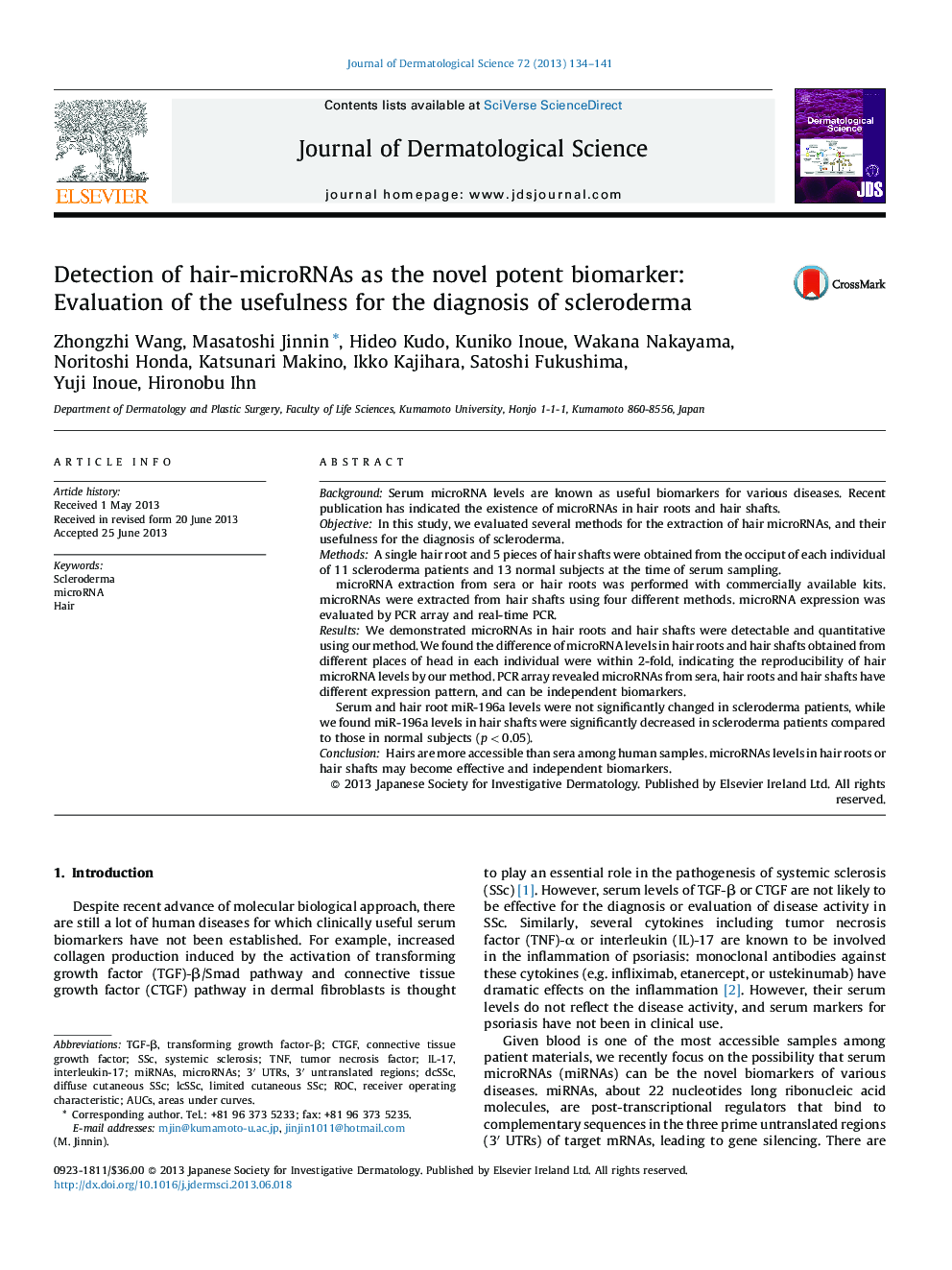| Article ID | Journal | Published Year | Pages | File Type |
|---|---|---|---|---|
| 3212989 | Journal of Dermatological Science | 2013 | 8 Pages |
BackgroundSerum microRNA levels are known as useful biomarkers for various diseases. Recent publication has indicated the existence of microRNAs in hair roots and hair shafts.ObjectiveIn this study, we evaluated several methods for the extraction of hair microRNAs, and their usefulness for the diagnosis of scleroderma.MethodsA single hair root and 5 pieces of hair shafts were obtained from the occiput of each individual of 11 scleroderma patients and 13 normal subjects at the time of serum sampling.microRNA extraction from sera or hair roots was performed with commercially available kits. microRNAs were extracted from hair shafts using four different methods. microRNA expression was evaluated by PCR array and real-time PCR.ResultsWe demonstrated microRNAs in hair roots and hair shafts were detectable and quantitative using our method. We found the difference of microRNA levels in hair roots and hair shafts obtained from different places of head in each individual were within 2-fold, indicating the reproducibility of hair microRNA levels by our method. PCR array revealed microRNAs from sera, hair roots and hair shafts have different expression pattern, and can be independent biomarkers.Serum and hair root miR-196a levels were not significantly changed in scleroderma patients, while we found miR-196a levels in hair shafts were significantly decreased in scleroderma patients compared to those in normal subjects (p < 0.05).ConclusionHairs are more accessible than sera among human samples. microRNAs levels in hair roots or hair shafts may become effective and independent biomarkers.
